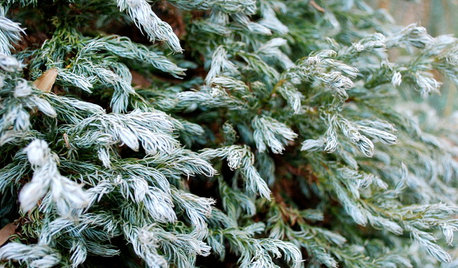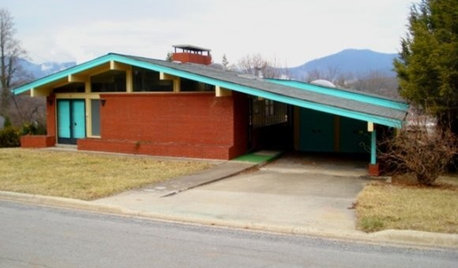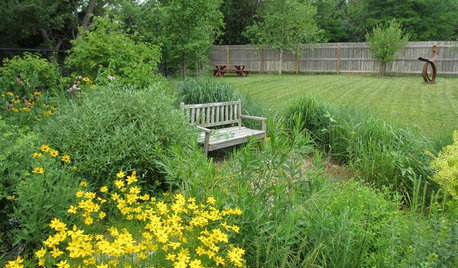How to tell how much a Chamaecyparis grew last year?
wannabegardnr
10 years ago
Related Stories

GARDENING GUIDESGreat Design Plant: Chamaecyparis Pisifera ‘Curly Tops’
Curly Tops sawara cypress brings great color, texture and shape to the garden — and its size is easily manageable
Full Story
LIFEHouzz Call: Show Us the House You Grew Up In
Share a photo and story about your childhood home. Does it influence your design tastes today?
Full Story
LIFETell Us: Do You Know How to Live With Your Parents?
If you've tried multigenerational living under one roof, we'd love to hear the details
Full Story
ARCHITECTURETell a Story With Design for a More Meaningful Home
Go beyond a home's bones to find the narrative at its heart, for a more rewarding experience
Full Story
KITCHEN DESIGNHouzz Call: Tell Us About Your First Kitchen
Great or godforsaken? Ragtag or refined? We want to hear about your younger self’s cooking space
Full Story
MORE ROOMSDesigns for Living: Every Room Tells a Story
8 Rooms, 8 Little Stories. What Tale Does Your Interior Tell?
Full Story
FUN HOUZZHouzz Call: Tell Us About Your Dream House
Let your home fantasy loose — the sky's the limit, and we want to hear all about it
Full Story
GARDENING GUIDESHow to Design a Garden That Lasts
Climates are changing. Wildlife is evolving. Can your garden keep up?
Full Story
GARDENING GUIDES8 Native Shrubs for Year-Round Bird Feeding
It’s not just about berries. These plants provide insects for birds and seasonal interest for gardeners
Full Story
COLORColor of the Year: Off-White Is On Trend for 2016
See why four paint brands have chosen a shade of white as their hot hue for the new year
Full StorySponsored
Your Custom Bath Designers & Remodelers in Columbus I 10X Best Houzz
More Discussions








pineresin
ken_adrian Adrian MI cold Z5
Related Professionals
Saint Charles Landscape Architects & Landscape Designers · Wareham Landscape Architects & Landscape Designers · Waunakee Landscape Architects & Landscape Designers · Springfield Landscape Contractors · Surprise Landscape Contractors · Wilmington Landscape Contractors · Brookside Landscape Contractors · Fair Lawn Landscape Contractors · Lemoore Landscape Contractors · Melrose Landscape Contractors · South Farmingdale Landscape Contractors · Suitland Landscape Contractors · Sun City Center Landscape Contractors · Weslaco Landscape Contractors · Quartz Hill Landscape ContractorswannabegardnrOriginal Author
Embothrium
ken_adrian Adrian MI cold Z5
wannabegardnrOriginal Author
wannabegardnrOriginal Author
ken_adrian Adrian MI cold Z5
wannabegardnrOriginal Author
wannabegardnrOriginal Author
pinetree30
pinetree30
wannabegardnrOriginal Author
taxo_man
wannabegardnrOriginal Author